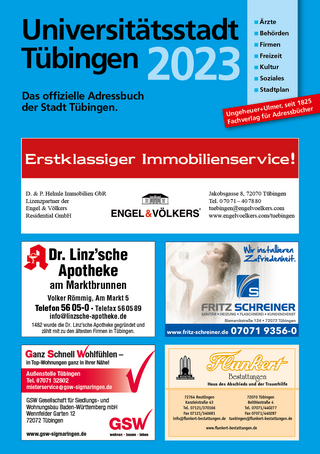
Introducing Communication Research
SAGE Publications Inc (Verlag)
978-1-4833-7941-8 (ISBN)
- Titel ist leider vergriffen;
keine Neuauflage - Artikel merken
Introducing Communication Research helps students understand the communication research process from start to finish. The Third Edition has been updated throughout to explain the Internet and social media as tools and topics for communication research.
Streamlined, accessible, and with campus-based research examples that students can relate to, this text guides students through the fundamentals of conducting research and presenting research findings for scholarly, professional, news/media, and web audiences.
Donald Treadwell earned his master’s degree in communication from Cornell University and his PhD in communication and rhetoric from Rensselaer Polytechnic Institute. He developed and taught communication research classes in classroom and online settings and also taught courses in organizational communication, public relations, and public relations writing. He is the coauthor of Public Relations Writing: Principles in Practice (2nd ed., Sage, 2005). He has published and presented research on organizational image, consumer response to college names, health professionals’ images of AIDS, faculty perceptions of the communication discipline, and employers’ expectations of newly hired communication graduates. His research appears in Communication Monographs, Journal of Technical Writing and Communication, Public Relations Review, Journal of Human Subjectivity, and Criminal Justice Ethics. He is professor emeritus, Westfield State University, and has international consulting experience in agricultural extension and health communication.
Chapter 1: Getting Started: Possibilities And Decisions
Chapter Overview
Chapter Objectives
Getting Started In Research
Basic Assumptions Behind Communication Research
Some Research Possibilities: What Can We Do With An Ad?
Some Research Possibilities: Beyond The Ad
A Series Of Unavoidable Decisions
Problem Posing, Problem Solving, Peer Persuasion
Ethics Panel: A Health Communication Dilemma
Chapter Summary
Application Exercises
Recommended Reading
Recommended Web Resources
References
Chapter 2: First Decisions: What, Why, How?
Chapter Overview
Chapter Objectives
Starting With The “What” Question: Ideas And Observations
Starting With The “Why” Question: Goals And Values
Starting With The “How” Question: Methods and Epistemologies
Starting With A Worldview: Basic Beliefs
Starting From the Work Of Others
Firming Up Questions
Questioning The Questions
Starting With No Questions
Moving In A Hermeneutic Circle
Ethics Panel: Do Some Research Methods Have More Ethical Implications Than Others?
Chapter Summary
Application Exercises
Recommended Reading
Recommended Web Resources
References
Chapter 3: Ethics: What Are My Responsibilities As A Researcher?
Chapter Overview
Chapter Objectives
Introduction: Some Ethical Decisions
Ethics Issues In Communication Research
Some Classic Ethical Positions
Two Brief Histories – Or Why We Care About Research Ethics
Contemporary Codes Of Ethics
Regulations
Peer Review And Institutional Review Boards
What Should I Call You? The Ethics Of Involvement
Oh Brave New World, That Has Such Creatures In It: The Internet And Research Ethics
Ethics Panel: Facebook Faces A Furor
Chapter Summary
Application Exercises
Recommended Reading
Recommended Web Resources
References
Chapter 4: You Could Look It Up: Reading, Recording And Reviewing Research
Chapter Overview
Chapter Objectives
Library Research: Why Bother?
Finding Relevance, Finding Quality
Scholarly Databases Versus Search Engines
Scholarly Journals: A Good Starting Point
Scholarly, Popular And Trade Publications: What Is The Difference?
Primary Versus Secondary Sources
Search Terms And Search Fields
How Can The Library Of Congress Help My Literature Search?
Other Resources
How To Be Skeptical About Information, Especially Web Information
Mr Boole and The Three Bears
Saving Your Search Results
Reviewing The Literature
The Literature Review: Writing Your Search Results
Ethics Panel: Politics And Publication
Chapter Summary
Application Exercises
Recommended Reading
Recommended Web Resources
References
Chapter 5: Measurement: Research Using Numbers
Chapter Overview
Chapter Objectives
What Do Your Head Size, Attitudes and Readability Have In Common?
An Introduction To Scales
Research Noir
To Noir Is Not Enough: Reliability And Validity
Reliability
Validity
Two Common Measurement Scales
Ethics Panel: The Ethics Of Measurement Scales
Chapter Summary
Application Exercises
Recommended Reading
References
Chapter 6: Summarizing Research Results: Data Reduction And Descriptive Statistics
Chapter Overview
Chapter Objectives
Introduction
Preliminary Considerations: Missing Data and Anomalous Data
Data Reduction
Measures Of Central Tendency: Mean, Median And Mode
Measures Of Dispersion: Minimum, Maximum, Range, Interquartile Range, Variance and Standard Deviation
z Score
The Chi-Square Test
Ethics Panel: Can Rankings Be Misleading?
Chapter Summary
Application Exercises
Recommended Reading
Recommended Web Resources
References
Chapter 7: Generalizing From Research Results: Inferential Statistics
Chapter Overview
Chapter Objectives
Introduction
The Language of Curves
Generalizing From Data: Inferential Statistics
The Normal Curve and the Central Limit Theorem
Testing For Differences Between And Among Groups
Testing For Relationships Between And Among Variables
Two Final Decisions
Ethics Panel: A Communicative Tension
Chapter Summary
Application Exercises
Recommended Web Resources
References
Chapter 8: Sampling: Who, What And How Many?
Chapter Overview
Chapter Objectives
Introduction
Non-Probability Sampling
Probability Sampling
How Big Does My Sample Have To Be?
Some Issues With Sampling Frames
Ethics Panel: Checking the Ethics Of Survey Research
Chapter Summary
Application Exercises
Recommended Reading
Recommended Web Resources
References
Chapter 9: Surveys: Putting Numbers On Opinions
Chapter Overview
Chapter Objectives
Introduction: Advantages And Disadvantages Of Surveys
Types Of Surveys
Writing And Formatting Questions
Survey Wording: “If It Can Be Misinterpreted, It Will Be.”
Online Surveys
Improving Survey Response Rates
Capturing And Processing Survey Data
Using Other People’s Surveys
Ethics Panel: Clients And Methods As Ethical Decisions
Chapter Summary
Application Exercises
Recommended Reading
Recommended Web Resources
References
Chapter 10: Experiments: Researching Cause And Effect
Chapter Overview
Chapter Objectives
Introduction: Advantages And Disadvantages Of Experiments
Field Experiments and Ex Post Facto Designs
Basic Experimental Design
Designing For Control
Designing For Random Assignment
Time Series Analysis
Factorial Designs
Between-Subjects and Within-Subjects Design
Validity and Experimental Design
Ethics Panel: Two Famous And Controversial Experiments
Chapter Summary
Application Exercises
Recommended Reading
Recommended Web Resources
References
Chapter 11: Watching And Listening: Qualitative Research For In-Depth Understanding
Chapter Overview
Chapter Objectives
Introduction: Advantages And Disadvantages Of Watching And Listening Methods
Qualitative And Quantitative: Similarities And Differences
Researcher – Participant Relationships
Watching And Listening Methods
Making Sense Of Qualitative Data
Drowning In Data? CAQDAS To The Rescue
Ethics Panel: In Which A Professor Becomes A Student
Chapter Summary
Application Exercises
Recommended Reading
Recommended Web Resources
References
Chapter 12: Content Analysis: Understanding Communication Content In Numbers
Chapter Overview
Chapter Objectives
Introduction: Advantages And Disadvantages Of Content ANALYSIS
A Basic Content Analysis
An Expanded Content Analysis
Content Analysis Of Human Interaction
Content Analysis Software
Ethics Panel: Could Analyzing Media Content Result In Harm?
Chapter Summary
Application Exercises
Recommended Reading
Recommended Web Resources
References
Chapter 13: Rhetorical And Critical Analyses, And More: Understanding Communication Content In Words
Chapter Overview
Chapter Objectives
Introduction: Advantages and Disadvantages of Qualitative Analyses of Content
Rhetorical Analyses
Narrative Analysis
Metaphor Analysis
Discourse Analysis
Conversation Analysis
Semiotics
Critical Analyses
Ethics Panel: Research As Manipulative Practice
Chapter Summary
Application Exercises
Recommended Reading
Recommended Web Resources
References
Chapter 14: Writing and Presenting Research
Chapter Overview
Chapter Objectives
Introduction
Writing For Scholarly Publics: Voices In The Conversation
Writing For Interest Groups And News Media
Writing and Presenting With the Web
Editorial Processes
The Interplay of Style And Accuracy
Presenting For Scholarly Publics: Conferences And Panels
An FYI on PPT
Some Communication Guidelines
Ethics Panel: Balancing Between Scholarly And Popular Writing
Chapter Summary
Application Exercises
Recommended Reading
Recommended Web Resources
References
| Verlagsort | Thousand Oaks |
|---|---|
| Sprache | englisch |
| Maße | 203 x 254 mm |
| Gewicht | 700 g |
| Themenwelt | Sozialwissenschaften ► Kommunikation / Medien ► Allgemeines / Lexika |
| Sozialwissenschaften ► Kommunikation / Medien ► Kommunikationswissenschaft | |
| Sozialwissenschaften ► Soziologie ► Empirische Sozialforschung | |
| ISBN-10 | 1-4833-7941-8 / 1483379418 |
| ISBN-13 | 978-1-4833-7941-8 / 9781483379418 |
| Zustand | Neuware |
| Haben Sie eine Frage zum Produkt? |
aus dem Bereich


